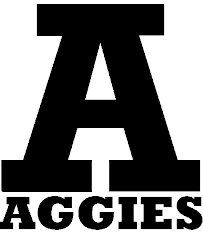Thursday, February 25, 2010
Man's Best Friend
That yearbook also lots of pictures of barns on campus, but it's hard to put them in context with our barn. What year were the other barns moved away?
Also, there are frequent mentions of barn dances around this time, and it sounds like some of them may have actually been held in barns. Any stories about dances in the horse barn?
W.L. Skidmore
1. Jay (?) Skidmore was a Sociology professor here on campus and was the son of Lonnie. Jay's wife Hannah Jean might still be alive though remarried.
2. He would look up that side of the family and get in contact with me if anymore information was forthcoming.
Dick did mention that there was a Skidmore architectural firm in L.A. and Bill mentioned one in Chicago. Leads.....
I am going to follow up on the LA and Chicago and let y'all know.
Wednesday, February 24, 2010
The Plot Thickens
Thursday, February 18, 2010
Speech Communication in the Barn

Harold Kinzer is a retired Speech Communication Professor who wrote a detailed history of his connection to the Barn. Below are some excerpts which provide a feel for his relationship to the building, the students, and the program.
From 1994-2007, the primary Barn use was speech communication instruction, the Barn continued to be known either as the “Art Barn” or “PSYAL” (psychology animal lab).
During the 14 years that I was in the Barn, I began each term by joking that the Barn is where the university hid embarrassing professors. Possibly some students, after working with me, thought that this was a truthful statement. While I was out, an unknown student taped a vinyl clown to my office door. I took this as a compliment and kept it there until my retirement. Of course, I might have misunderstood the student’s intent.
Most students had a hoot presenting speeches in an actual barn haymow. While waiting for class to begin some students would explore the abandoned equipment I had piled on the first floor. None had seen electronic equipment with tubes. Yes, radios once had big glowing tubes!
Monday, February 8, 2010
Interview with Jerry Fuhriman
I took a class in the Barn, and that would have been ceramics, it was either ceramics or sculpture, I could have had two classes but I remember that they were both from [Larry] Elsner. So my memory of the Art Barn is less the structure, and more the personality of the instructor.
I probably didn't appreciate how great of an artist he was at the time. I remember he was very, very quiet and you would show him your project, and unlike most people he wouldn't just start chattering about it right away. He would say nothing but he would pick it up and he would hold it, and he would caress it with his hands because part of the sculpture was just the tactile, you know the surface and how it felt, and the weight of it, and proportions and so. And then generally he would say something none committal like 'you know you might work on the form a little bit,' which left you wondering what you should do about the form.
It wasn't until years later, in fact, it's interesting that he was my professor when I was a freshman and he was also on my tenure committee. So I went a long time knowing him and then eventually collecting his work, and realizing what a terrific artist he was.
Saturday, February 6, 2010
Text from interview
He'd walk down the hill for lunch.... Well the barns were near the office. The Dairy department was on the north side of the Quad in that building. And the barns were behind that. Campus ended there…. Dad spent his life with the Dairy department at Utah State and it was a very important part of all of our lives. Of course we lived right across from campus, so we were there a lot.
When talking about campus today, she said:
It is not the same place at all. You know what I do think is fine though is that someone, in their infinite wisdom, kept the Quad free of classrooms and buildings, because it really adds to the beauty of the campus.... You see how much goes on there too. People play there. Rest there and study there when the weather is decent.
Friday, February 5, 2010
Manon Russell excerpt?
Wednesday, February 3, 2010
Folklore interview
I think the folklorists need some representation on this blog, especially since we outnumber everyone else.
Since interviewing is our first step, I thought I would post the suggestions Elaine made at our meeting and invite you to respond with what works or doesn’t work for you. I've added a few things I wish I had done.
Have them sign the release form before you get started – tell them what will happen with their interview and where it will be stored.
Background, get general information on the person:
Full name (correct spelling) When were you born? Where? Are you from
Introduction
What is your first or strongest memory of the Art Barn?
How did you first encounter it? Did you walk by it, work in it, visit it?
Do you remember it with horses in (pre-1959), or ceramics, or offices?
What did it look like (or smell like)? Describe exterior, interior? Do you have pictures or articles?
Silence – give them a chance to recall memories
Stories- Tell me a story you remember from the barn - funny or sad?
Closing - Make sure that they know how to contact you if they remember anything else.
Thank you for your time.
